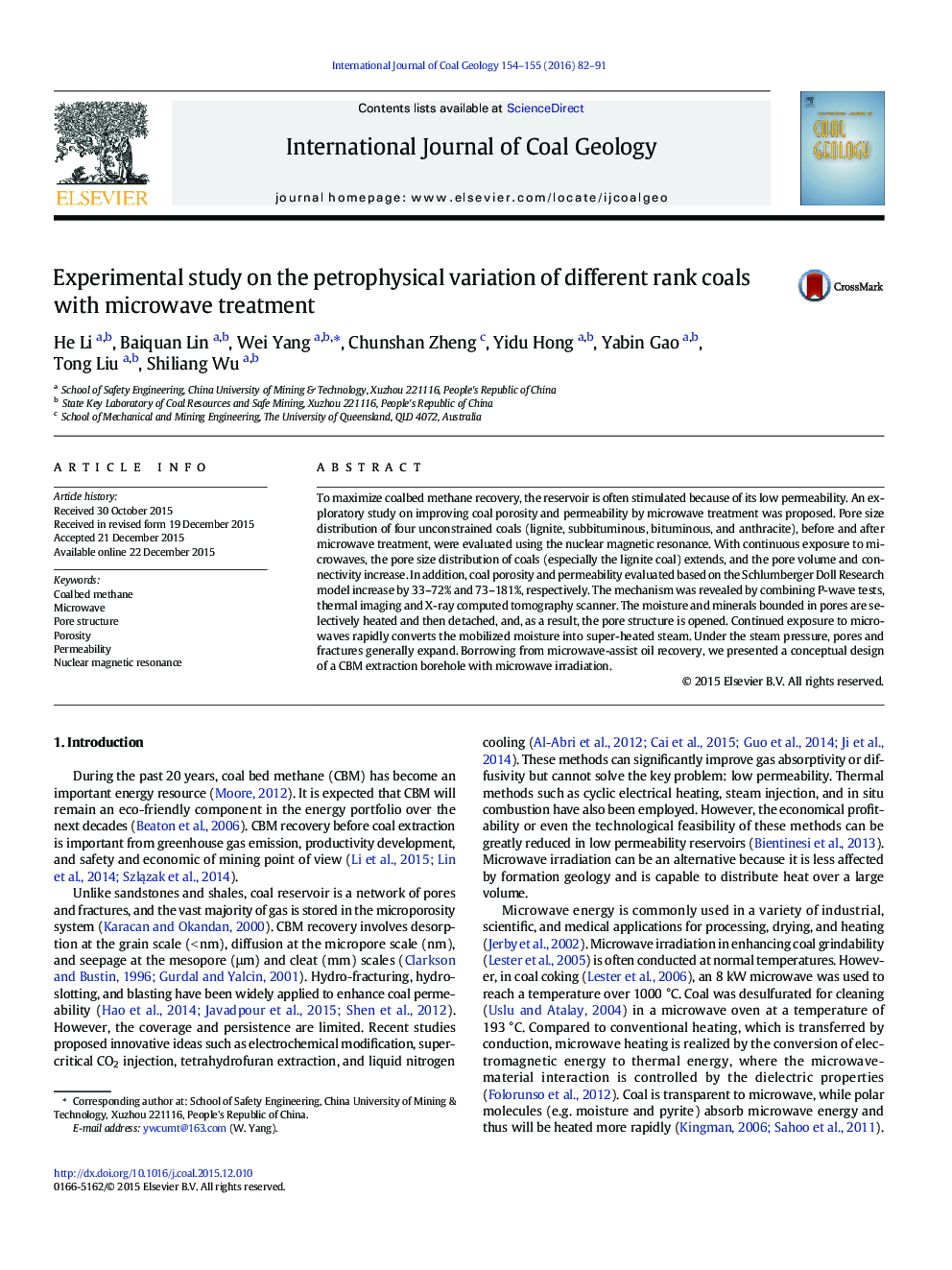| Article ID | Journal | Published Year | Pages | File Type |
|---|---|---|---|---|
| 1752858 | International Journal of Coal Geology | 2016 | 10 Pages |
Abstract
To maximize coalbed methane recovery, the reservoir is often stimulated because of its low permeability. An exploratory study on improving coal porosity and permeability by microwave treatment was proposed. Pore size distribution of four unconstrained coals (lignite, subbituminous, bituminous, and anthracite), before and after microwave treatment, were evaluated using the nuclear magnetic resonance. With continuous exposure to microwaves, the pore size distribution of coals (especially the lignite coal) extends, and the pore volume and connectivity increase. In addition, coal porosity and permeability evaluated based on the Schlumberger Doll Research model increase by 33-72% and 73-181%, respectively. The mechanism was revealed by combining P-wave tests, thermal imaging and X-ray computed tomography scanner. The moisture and minerals bounded in pores are selectively heated and then detached, and, as a result, the pore structure is opened. Continued exposure to microwaves rapidly converts the mobilized moisture into super-heated steam. Under the steam pressure, pores and fractures generally expand. Borrowing from microwave-assist oil recovery, we presented a conceptual design of a CBM extraction borehole with microwave irradiation.
Related Topics
Physical Sciences and Engineering
Earth and Planetary Sciences
Economic Geology
Authors
He Li, Baiquan Lin, Wei Yang, Chunshan Zheng, Yidu Hong, Yabin Gao, Tong Liu, Shiliang Wu,
